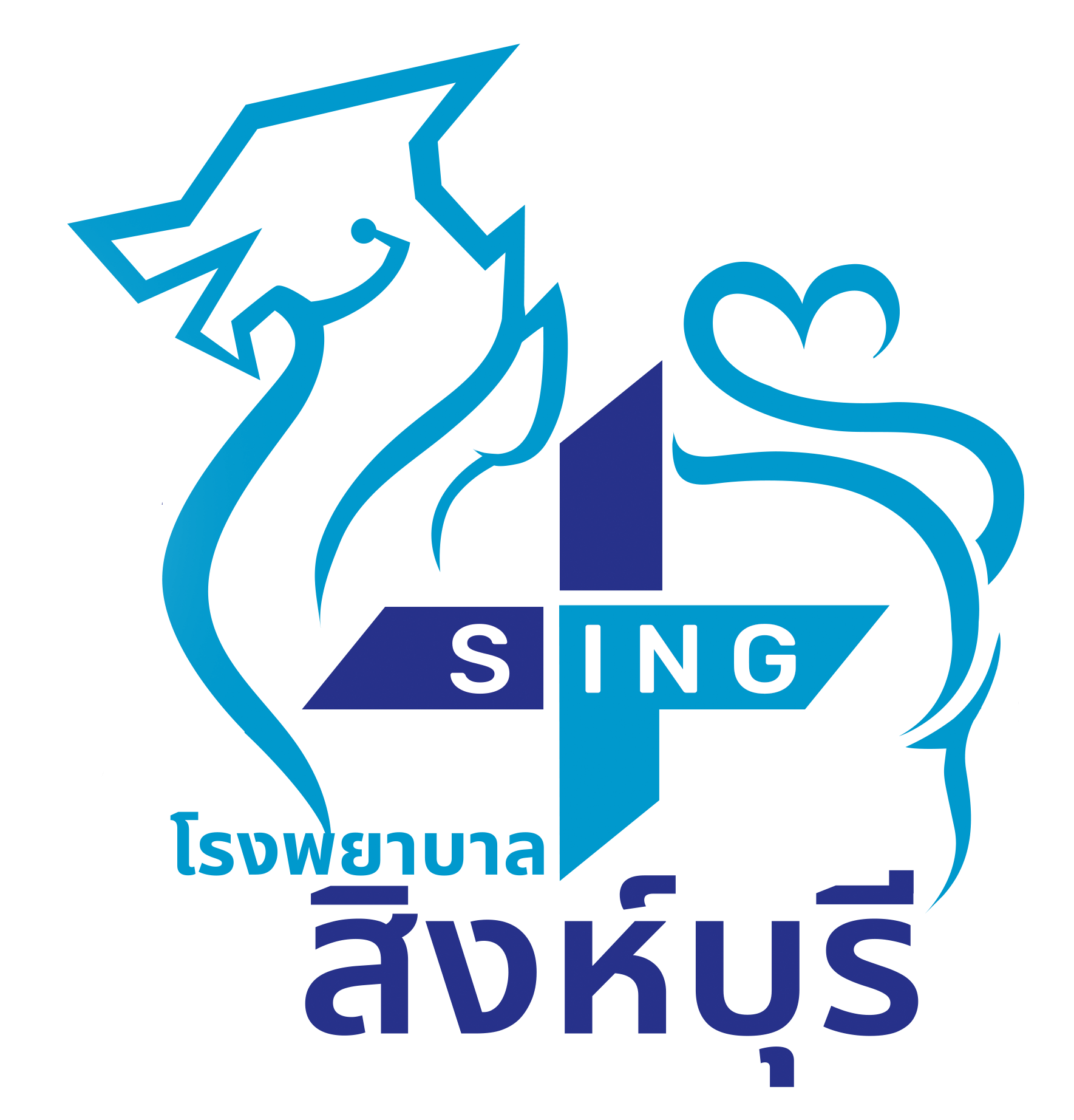ความชุกและปัจจัยที่มีความสัมพันธ์กับการเกิดภาวะแทรกซ้อน ในผู้ป่วยเด็กโรคไตอักเสบเฉียบพลันหลังการติดเชื้อสเตรปโตคอคคัสในโรงพยาบาลสระบุรี
คำสำคัญ:
ไตอักเสบเฉียบพลันหลังการติดเชื้อสเตรปโตคอคคัส, ผู้ป่วยเด็ก, ภาวะแทรกซ้อนบทคัดย่อ
Acute poststreptococcal glomerulonephritis (APSGN) เป็นโรคไตอักเสบเฉียบพลันในเด็กที่พบได้บ่อย การพยากรณ์โรคดี แต่บางรายมีความรุนแรงจนเกิดภาวะไตวายเฉียบพลันได้ การศึกษานี้เป็น retrospective descriptive เก็บข้อมูลจากเวชระเบียนของผู้ป่วยเด็กที่ได้รับการวินิจฉัยเป็นโรค APSGN ที่เข้ารับการรักษาในโรงพยาบาลสระบุรี ระหว่างวันที่ 1 มกราคม 2556 ถึง 31 ธันวาคม 2565 เพื่อศึกษาความชุก อาการทางคลินิก ผลการตรวจทางห้องปฏิบัติการ ภาวะแทรกซ้อน ผลการรักษา และปัจจัยที่มีความสัมพันธ์กับการเกิดภาวะแทรกซ้อน โดยใช้สถิติ Chi-square test และ Fisher’s exact test
ผลการศึกษา ผู้ป่วย 94 ราย อายุเฉลี่ย 8.7 ปี เพศชายร้อยละ 69.2 ช่วงที่พบความชุกมากที่สุด คือ สิงหาคม มีประวัติการติดเชื้อทางเดินหายใจส่วนต้นมากที่สุดร้อยละ 37 ความดันโลหิตสูงร้อยละ 92.6 ค่า anti-DNAse B สูงร้อยละ 90.3 ค่า ASO titer สูงร้อยละ 84.9 ภาวะแทรกซ้อน คือ acute kidney injury (AKI) ร้อยละ 70.2 rapidly progressive glomerulonephritis (RPGN) ร้อยละ 12.8 ปัจจัยที่มีความสัมพันธ์กับการเกิด AKI คือ gross hematuria ที่ p-value 0.048 ปัจจัยที่มีความสัมพันธ์กับการเกิด RPGN คือ gross hematuria และค่า urine protein ≥ 3+ ที่ p-value 0.046 และ 0.001 ตามลำดับ
สรุปผลการศึกษา gross hematuria เป็นปัจจัยที่มีความสัมพันธ์กับการเกิด AKI และ RPGN ค่า urine protein ≥ 3+ เป็นปัจจัยที่มีความสัมพันธ์กับการเกิด RPGN
References
Rodriguez-Iturbe B, Najafian B, Sila A, Alpers CE. Acute postinfectious glomerulonephritis. In: Avner ED, Harmon WE, Naudet P, Yoshikawa N, Emma F, Goldstein SL, editors. Pediatric Nephrology. 7th ed. Berlin: Springer; 2016.p.959-69.
Eison TM, Ault BH, Jones DP, Chesney RW, Wyatt RJ. Post-streptococcal acute glomerulonephritis in children: clinical features and pathogenesis. Pediatr Nephrol 2011;16:165-80.
Yoshizawa N. Acute glomerulonephritis. Intern Med 2000;39:687-94.
Tasic V. Postinfectious glomerulonephritis. In: Geary D, Schaefer F, editors. Comprehensive pediatric nephrology. 1st ed. Philadelphia: Mosby; 2008.P.309-17.
Kasahara T, Hayakawa H, Okubo S, Okugawa T, Kabuki N, Tomizawa S, et al. Prognosis of acute poststreptococcal glomerulonephritis (APSGN) is excellent in children, when adequately diagnosed. Pediatr Int 2001;43:364-7.
Dreakhshan A, Hekmat VR. Acute Glomerulonephritis in Southern Iran. Iran J Pediatr 2008;18:143-8.
Takeno S, Wisanuyotin S, Jiravuttipong A, Sirivichayakul C, Limkittikul K. Risk factor and outcome of atypical acute post-streptococcal glomerulonephritis in pediatrics. Southeast Asian J Trop Med Public Health 2013;44:281-8.
Becquet O, Pasche J, Gatti H, Chenel C, Abely M, Morville P, et al. Acute post-streptococcal glomerulonephritis in children of French Polynesia: a 3-year retrospective study. Pediatr Nephrol 2010;25:275-80.
Yuniarchan S, Prasetyo RV, Soemyarso NA, Noer MS. Risk factors for hypertensive crisis in children with acute glomerulonephritis. Pediatr Indones 2015;56:101-6.
Yusof W, Adlina W, Majdi N. Clinical predictors of acute kidney injury in children with acute post-streptococcal
glomerulonephritis a tertiary centre experience. Singapore Medical Journal 2023;20:1-4.
Kaplan EL, Rothermel CD, Johnson DR. Antistreptolysis O and anti-deoxyribonuclease B titers: normal values for children ages 2 to 12 in the United States. Pediatrics 1998;101:86-8.
Pan CG, Avner ED. Glomerulonephritis Associated with Infections. In: Kliegman RM, Stanton BF, St Geme JW, Behrman RE, editors. Nelson Textbook of Pediatrics. 20thed. Canada: Elsevier; 2016.p.2498-501.
VanDeVoorde RG. Acute Poststreptococcal Glomerulonephritis: The Most Common Acute Glomerulonephritis. Pediatrics in Review 2015;36:3-13.
D’Cruz F, Samsudin AT, Hamid MS, Abraham T. Acute glomerulonephritis in Kelantan--a prospective study. Med J Malaysia 1990;45:123-30.
Muscatello DJ, O'Grady KA, Neville K, McAnulty J. Acute poststreptococcal glomerulonephritis: public health implications of recent clusters in New South Wales and epidemiology of hospital admissions. Epidemiol Infect. 2001;126:365-72.
Marshall CS, Cheng AC, Markey PG, Towers RJ, Richardson LJ, Fagan PK, et al. Acute post-streptococcal glomerulonephritis in the Northern Territory of Australia: a review of 16 years data and comparison with the literature. Am J Trop Med Hyg 2011;85:703-10.
Ilyas M, Tolaymat A. Changing epidemiology of acute post-streptococcal glomerulonephritis in Northeast Florida: a comparative study. Pediatr Nephrol 2008;23:1101-6.
Rodriguez-Iturbe B, Musser JM. The Current State of Poststreptococcal Glomerulonephritis. J Am Soc Nephrol 2008;19:1855–64.
Pinto SWL, Mastroianni-Kirsztajn G, Sesso R, Seguro AC. Ten-Year Follow-up of Patients with Epidemic Post Infectious Glomerulonephritis. PLoS One 2015;10:1-9.
Kuem SW, Hur SM, Youn YS, Rhim JW, Suh JS, Lee KY. Changes in Acute Poststreptococcal Glomerulonephritis: An Observation Study at a Single Korean Hospital Over Two Decades. Child Kidney Dis 2015;19:112-7.
Elzouki AY. Poatstreptococcal Acute Glomerulonephritis. In: Elzouki AY, Harfi HA, Nazer H, Stapleton FB, Oh W, Whitley RJ, editors. Textbook of Clinical Pediatric. 2thEd. Berlin: Springer; 2012.p.2743-8.
Flynn JT, Falkner BE. New clinical practice guideline for the management of high blood pressure in children and adolescents. Hypertension 2017;70:683-6.
ธีรวัฒน์ บุดดาวงศ์. โรคไตอักเสบเฉียบพลันจากการติดเชื้อสเตรปโตคอคคัสในเด็ก:อุบัติการณ์ ลักษณะทางคลินิกผลการรักษาและการประมาณน้ำหนักที่แท้จริง. วารสารกุมารเวชศาสตร์ 2561;57:123-32.
Karakaya D, Gungor T, Cakici EK, Yazilitas F, Celikkaya E, Yucebas SC, et al. Predictors of rapidly progressive glomerulonephritis in acute Poststreptococcal Glomerulonephritis. Pediatric Nephrology 2023;38:3027-33.
Downloads
เผยแพร่แล้ว
How to Cite
ฉบับ
บท
License
Copyright (c) 2024 โรงพยาบาลสิงห์บุรี

This work is licensed under a Creative Commons Attribution-NonCommercial-NoDerivatives 4.0 International License.
บทความที่ได้รับการตีพิมพ์เป็นลิขสิทธิ์ของโรงพยาบาลสิงห์บุรี
ข้อความที่ปรากฏในบทความแต่ละเรื่องในวารสารวิชาการเล่มนี้เป็นความคิดเห็นส่วนตัวของผู้เขียนแต่ละท่านไม่เกี่ยวข้องกับโรงพยาบาลสิงห์บุรี และบุคคลากรท่านอื่นๆในโรงพยาบาลฯ แต่อย่างใด ความรับผิดชอบองค์ประกอบทั้งหมดของบทความแต่ละเรื่องเป็นของผู้เขียนแต่ละท่าน หากมีความผิดพลาดใดๆ ผู้เขียนแต่ละท่านจะรับผิดชอบบทความของตนเองแต่ผู้เดียว





